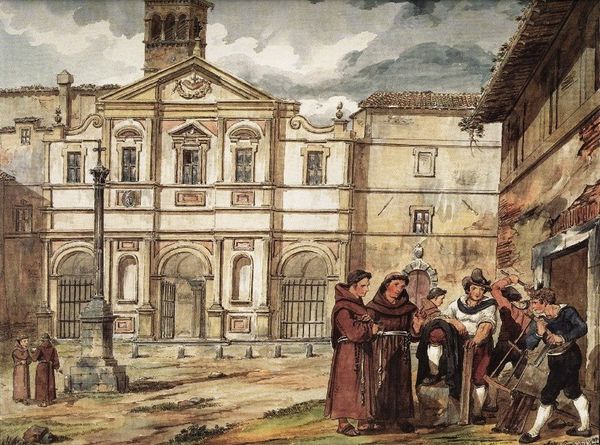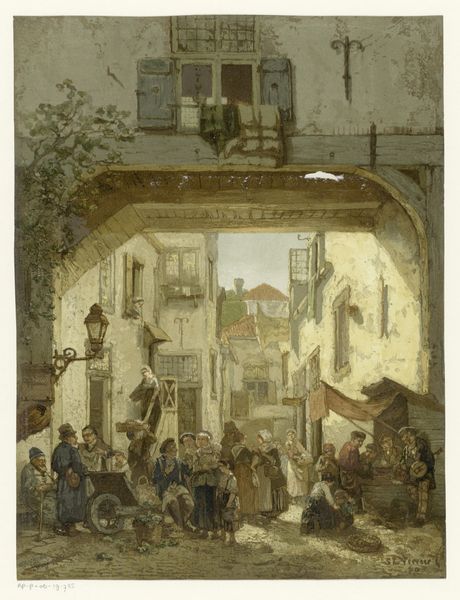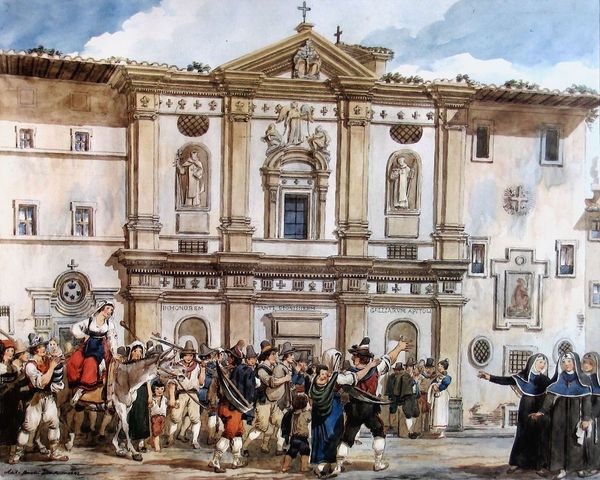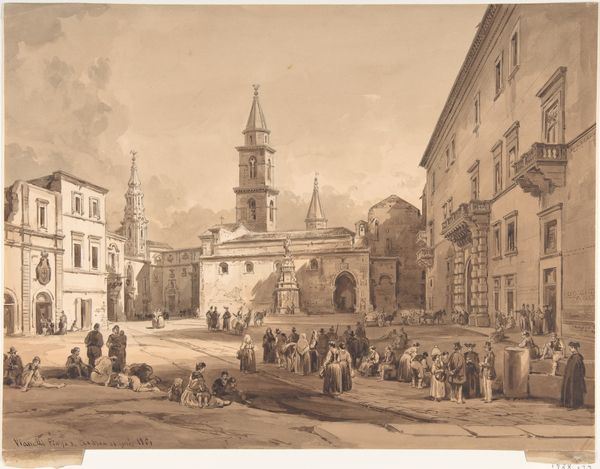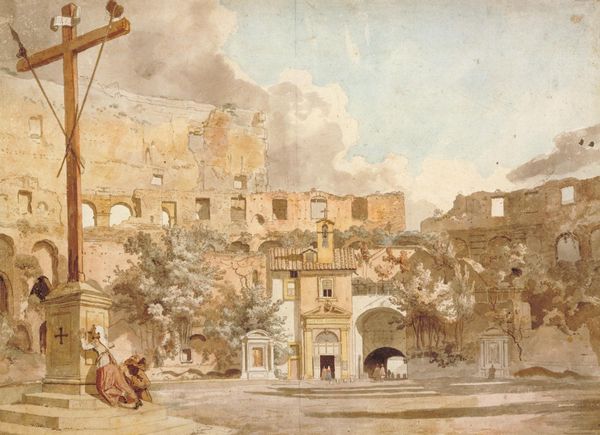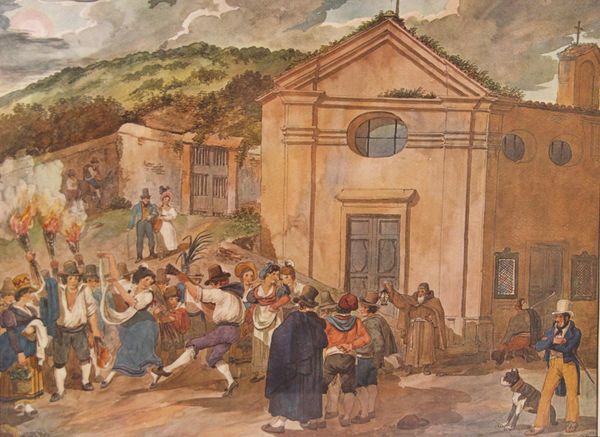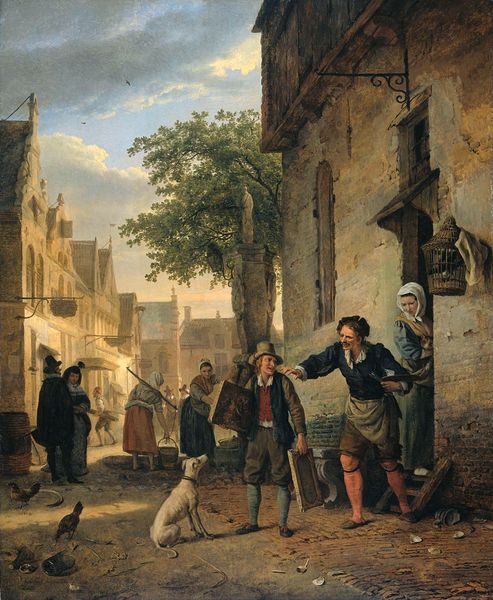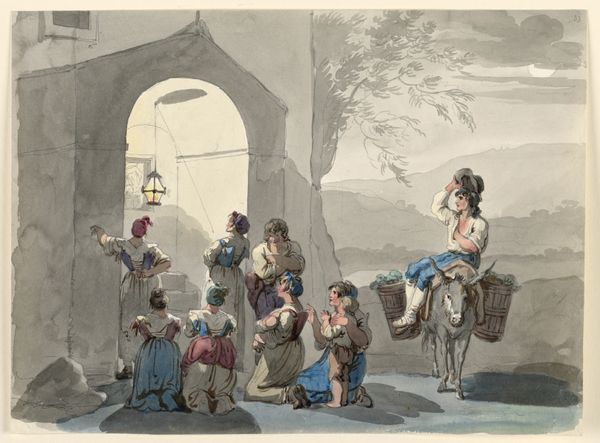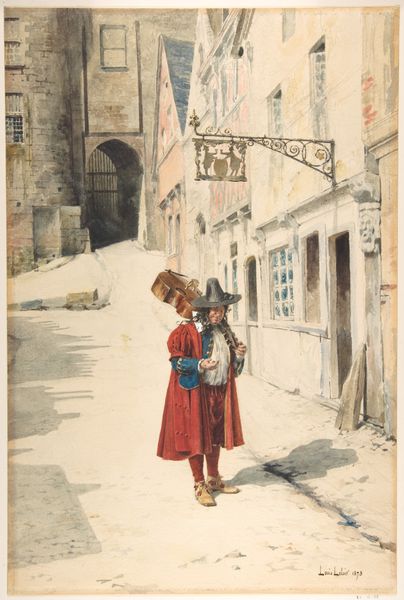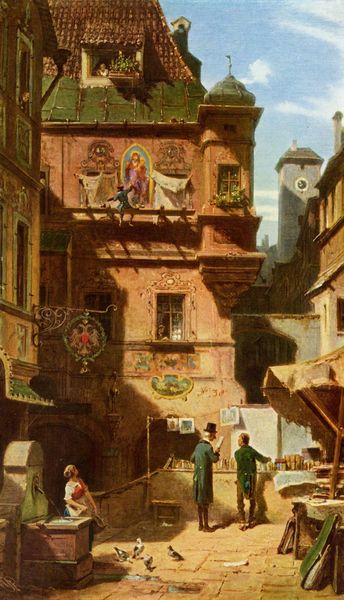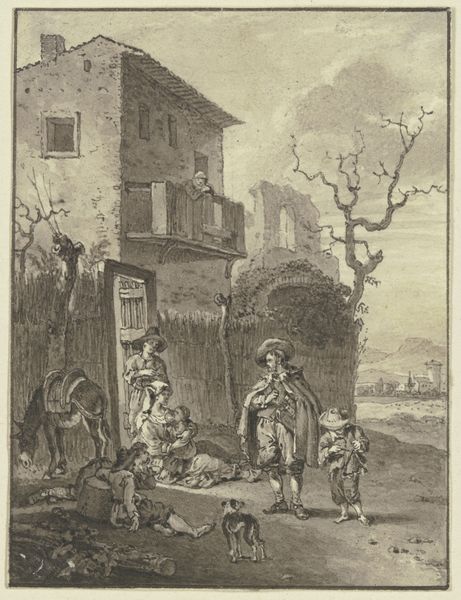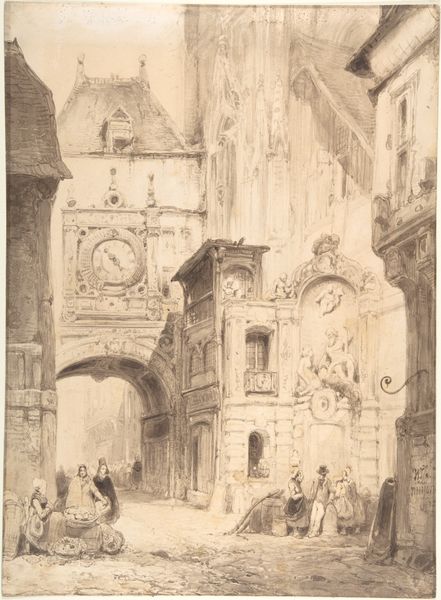
painting, watercolor
#
painting
#
oil painting
#
watercolor
#
romanticism
#
cityscape
#
watercolour illustration
#
genre-painting
#
italian-renaissance
#
watercolor
Copyright: Public domain
Curator: Oh, I do adore how time seems to slow down when you gaze upon this work. What do you think? Editor: It’s melancholy, definitely. And something about the scene feels deliberately staged, as if everyone is paused mid-narrative for us to observe. Curator: Well, this watercolor is entitled "Monastery of Sant’Urbano ai Pantani" by Achille Pinelli, created around 1834. He's really captured the feel of the Italian Renaissance, hasn't he? The painting is bustling with life around this ancient monastery, rendered in these incredibly delicate washes of color. Editor: And notice the figures—they aren't just picturesque. The nuns, the workers, the gentleman on the donkey. They all speak to the social strata present within Rome at this time. We get a sense of the economic disparity and how life varies greatly across the social spectrum in a place as iconic as the center of Catholicism. Curator: The whole thing is utterly captivating. I can almost feel the Roman sun baking the cobblestones. And there's such a charming imperfection to the architectural rendering, giving the scene this rustic feel. Did they really just slap paint on buildings? I want to dive in to explore. Editor: Perhaps this is Pinelli’s intent; to depict Italy at a turning point. Look closely—the architecture isn't pristine. The monastery shows its age with the stains and discoloration. A kind of visual parallel for how institutions, like this religious order, can simultaneously persist and decay in response to their own pasts. Curator: I see what you mean; a world of contradictions. Beauty and ruin, the mundane and the sacred… He handles it with a gentle hand, creating an honest portrait. There's such humility. I almost feel as if Pinelli isn't glorifying, but merely documenting. Editor: Absolutely. And isn’t that, perhaps, the highest form of activism? To simply hold space for reality in all its beauty and complexities without filtering. To observe carefully and invite understanding. Curator: Looking at Pinelli’s artwork, it makes you realize that Rome has always been a mix of stories unfolding all at once. He is drawing it to be a kind of bustling, real theater. And aren't we lucky to have captured a fleeting performance to study here? Editor: A performance perpetually caught between faith and everyday realities.
Comments
No comments
Be the first to comment and join the conversation on the ultimate creative platform.
